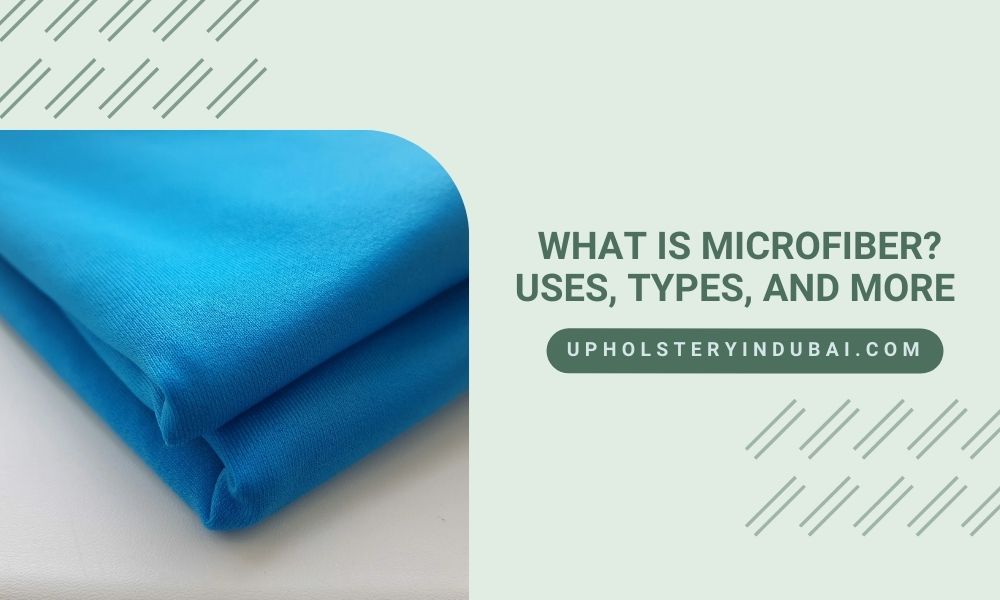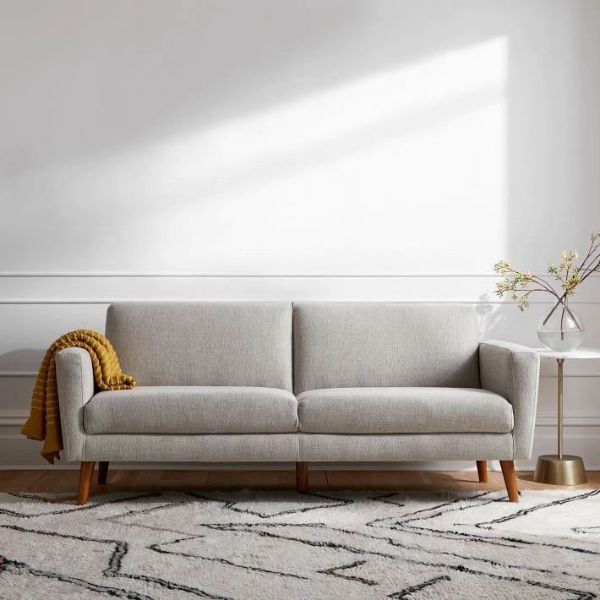Couch Upholstery is the fabric or covering that adorns the frame of a sofa or couch and offers both comfort and style. It is essential in determining the general appearance and atmosphere of the living area. Homeowners can personalize their sofas to match their interior design and preferences because of the broad variety of materials, colors, and patterns available for upholstery fabric. Couch Upholstery provides a pleasant seating area for unwinding and relaxing in addition to serving aesthetic purposes.

Several Reasons To Regularly Clean Couch Upholstery
The living room’s conspicuous and often-used couch upholstery necessitates routine cleaning for a number of reasons.
- On the surface of the upholstery, particles of dust, grime, and debris accumulate over time. Regular use, pet dander, and human hair all contribute to worsening the buildup, giving the area a dingy appearance.
- Couches are prone to spills, stains, and general wear and tear from food, drinks, and use. Stains can lodge themselves in the fabric if they are not treated, making them challenging to remove.
- In the upholstery of couches, dust mites, and other allergens can gather irritating those with health concerns and/or allergies.
- Couches can retain smells from a variety of things, including food, pets, and smoke. Cleaning thoroughly keeps the home fresh and welcoming while also removing bad odors.
- By avoiding excessive wear and strain brought on by filth and grime, routine cleaning and care can increase the lifespan of the couch upholstery.
Step-By-Step Guide To Clean Couch Upholstery
Always read the manufacturer’s care instructions before you start cleaning to find out the best cleaning techniques and any specific cleaning products you should stay away from. Different cleaning methods may be necessary for various upholstery fabric kinds. Here is a step-by-step article on cleaning the upholstery of the couch.
Step 1: Vacuuming
Start by thoroughly cleaning the couch upholstery to get rid of any loose dust, grime, or debris. To protect the fabric, use an upholstery attachment with a soft brush. Pay close attention to tufted areas, seams, and cracks because these are the common places for dust to gather.
Step 2: Spot Test
Conduct a spot test to determine the colorfastness and any adverse reactions before applying any cleaning solution to the entire upholstery. Make use of a clean, white towel to blot the test area after applying a little amount of the cleaning solution. You can carry out the cleaning procedure if there is no color leakage or damage.
Step 3: Choose The Right Cleaning Solution
The kind of upholstery fabric determines the best cleaning agent. You can use water and a few detergents on the clothes that can be washed. Consider using a specialized upholstery cleaner that is advised by the manufacturer for more fragile materials.
Step 4: Cleaning Water-Safe Fabric
Follow these methods for fabrics that are water-safe, such as microfiber, cotton, or blends of both.
-
Prepare The Cleaning Solution
In a spray bottle or a bucket, combine a few drops of mild detergent with water. Detergent residue may be left on the cloth if you use too much of it.
-
Pre-Treat Stains
Apply the cleaning solution liberally to the stained areas and then gently blot with a clean white cloth. As rubbing could spread the stain or harm the cloth, avoid doing so.
-
Cleaning The Upholstery
Evenly spray the cleaning agent on the surface of the couch, one piece at a time. The surface should be gently scrubbed in a circular motion using a soft brush or microfibre cloth.
-
Blotting
Blot the area with a clean, dry cloth to remove extra debris and moisture after each portion has been cleaned.
-
Drying
Before reusing the couch, let the upholstery dry out in the air. You can use a fan or open windows for enough ventilation to hasten the drying process.
Step 5: Cleaning Delicate Or Dry-Clean-Only Fabrics
To ensure the safe and efficient removal of stains and filth without causing harm to the fabric, it is preferable to employ a professional upholstery cleaning service for delicate or dry-clean-only materials.
Step 6: Dealing With Stubborn Stains
Consider using an upholstery stain remover suggested for the fabric type if tough stains don’t come out with routine cleaning. Always adhere to the product’s directions and test the stain remover on a small area of the stain before using it all over the stains.
Step 7: Routine Maintenance
Ensure routine care to keep your couch’s upholstery looking clean and new.
-
Weekly Vacuuming
Weekly vacuuming of the upholstery will keep surface dust from becoming embedded in the fabric.
-
Rotate And Flip Cushions
Flip and rotate the cushions frequently to balance wear and tear.
-
Use Arm Covers And Throws
To reduce the accumulation of dirt and grease, cover or toss high-contact surfaces like armrests.
-
Avoid Eating on The Couch
To avoid food stains and crumbs, avoid eating on the couch.
-
Keep Pets Off The Couch
To reduce pet hair and probable accidents, try to train your pets to remain off the couch.
Winding Up
An important aspect of keeping a clean and healthy living environment is cleaning the upholstery on your couch. Regular cleaning maintains the couch looking clean and inviting while also extending the life of the upholstery and removing dust, stains, and allergies. You can enjoy a clean and well-maintained couch that adds comfort and style to your living room for years to come by utilizing the right cleaning techniques and cleaning solutions for your upholstery fabric. To achieve the best results and maintain the beauty and integrity of your couch upholstery, think about hiring expert upholstery cleaning services if you’re unsure or need to work with sensitive materials.








